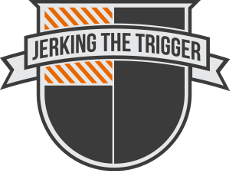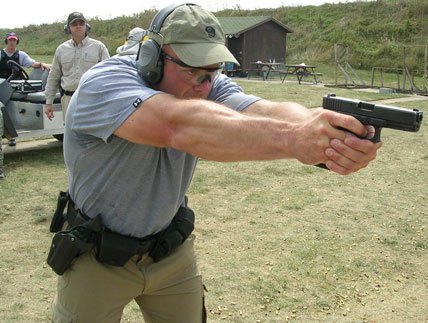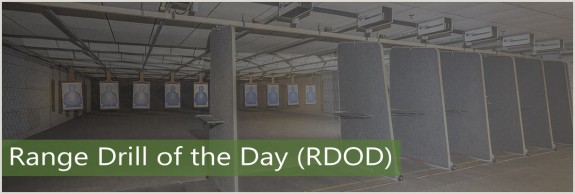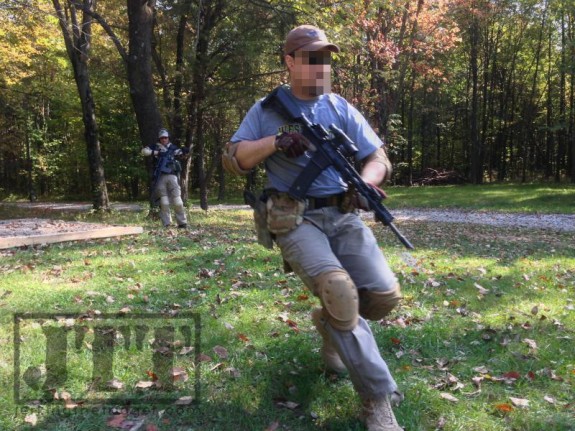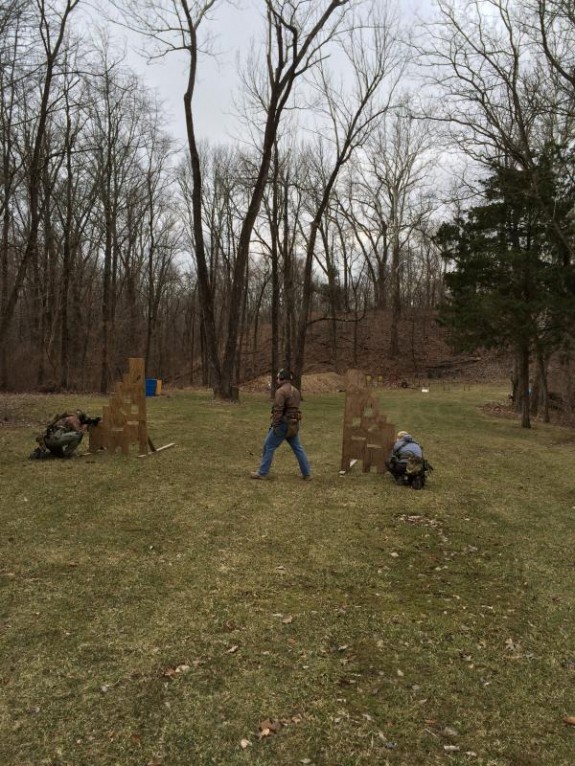A wise man once said, “If it’s stupid but it works, it isn’t stupid.”
One needs only to read the Armed Citizen column in your monthly copy of American Rifleman to see countless stories of people defending themselves with lowly .22LR firearms. We know empirically why the .22LR should not be a great fight stopper. We also know anecdotally that these modest firearms can and do achieve the desired result of stopping attacks… and it happens a lot.
Yet, when the topic of .22LR chambered firearms come up as it relates to home defense it seems that most shooters take one of two positions. Either they think it is absolutely absurd when you can have a [insert pet firearm/caliber here] or they acknowledge that there may be some isolated cases where something like a Ruger 10/22 might make sense. It is treated as either a bad idea or an idea that is okay in some situations. I think both of those viewpoints miss the bigger picture.
I may be about to commit gun blogger suicide but I have come to believe that something like a .22LR carbine is the answer more often than most shooters care to admit.

A Specific Example
Dann at God, Gals, Guns, Grub has trained literally thousands of people over the years and seen all types of interesting situations. One situation that he chronicled on his blog involved a woman with little shooting experience, a very limited budget of $246, and a very real, very urgent need for some protection. If this woman was to ask what to buy on an internet forum, she would likely be greeted with responses that didn’t truly meet her budget, didn’t meet her experience level, or that would take a fair amount of training to master (I’m looking at you shotgun/police trade-in revolver recommender guy).
The 10/22 met her budget both in the price of the firearm and ongoing cost of ownership thanks to relatively affordable .22LR ammo. The 10/22 also met her needs as a new shooter and not just in terms of skill but in terms of accessability. I know people who have paid more for a gun at Wal-Mart or Gander Mountain just to avoid setting foot in a real gun shop. It may be more perception than reality, but some people do not feel like the typical gun shop is accessible to them.
In that situation, the 10/22, some ammo, and a some very basic training makes perfect sense. Sure, there are still gun guys who would scoff at the idea but anyone with half a brain sees how it makes sense. However, I am going to go a step further. I am about to suggest that even beyond situations like the one above there is good reason to keep a 10/22 (or similar) for home defense.
A Dose of Reality
Gun guys can be more than just a little tone deaf. We don’t always do a good job of meeting new shooters where they are because we are too easily swayed by brand/caliber/instructor/firearm loyalty, oft repeated gun counter mantras, preconceived notions, and information devoid of context. This is the only way I can explain why women are often pushed toward small frame revolvers and pump-action shotguns are billed as viable home defense option for the inexperienced. I have received training specific to both of those firearms. Ring, ring, clue phone – when training courses are offered specifically for a certain type of firearm it isn’t because they are the easiest to use effectively.
We also have an incredible ability to ignore the fact that not everyone likes to do what we like to do or spend money on what we like to spend money on. Out there in the real world, the world beyond gun forums and training courses, there are people who won’t pay more than $300 for a gun and will never willingly attend firearm training. It may surprise you to learn that people like them use firearms to defend themselves every year. Training leads to better outcomes for sure but I would bet that the majority of people who use firearms to defend themselves have received little to no formal training.
These attitudes and the advice that grows out of them can lead people to believe that entering the realm of the armed and prepared is very costly or difficult. That isn’t, or shouldn’t be, the case.
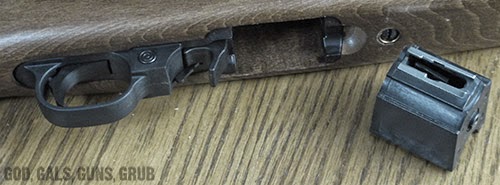
An Example Closer to Home
We all know the guy who decides he needs a gun to protect his family. He polls all the gun guys he knows at his church, place of work, and (shudder) the gun store. They tell him he needs a $1600 BaddyBlaster 3000 and then add a few hundreds dollars worth of widgets to make it work really well. He balks at the price and one of two things happens. He doesn’t buy it or he does but never shoots it because… you may not believe this… not everyone thinks “fun” and “worthwhile” when they think firearm training or even just shooting. Wouldn’t that guy be better off with a 10/22 that he might actually shoot and learn how to use in at least a recreational way?
Now, let’s change the situation a little. Maybe the guy does take the advice and he does buy the BaddyBlaster. He even takes multiple training courses and becomes an extremely proficient shooter. He builds a barricade for use on the range, buys $5K in steel targets, has a family budget line item for training ammo, reads Jerking the Trigger, and even becomes gun forum celebrity. Then someone breaks into his home while he is at work and his wife and pre-teen kids are alone. Now what? They never shot the BaddyBlaster or, if they did, it was years ago and all they remember was they they hated it. They may not even be physically capable of hoisting and aiming the BaddyBlaster!
I suspect that, if we are honest, that last paragraph sounds like a lot of us. Our wives and kids, while capable of learning to use any firearm at a high level, haven’t learned as much as we would like. There is a difference between being able to pick up your home defense shotgun and being able to use it effectively. I suspect that many of us have family members who may not even be able to pick them up. It is in these common cases, as well as the one-offs, that the semi-auto .22LR carbine becomes a solution.
A Real Solution
A lightweight, reliable, semi-auto .22LR carbine that is stoked with good quality, reliable ammo bridges the gap between the trained and untrained, between the capable and those with limited physical capabilities, between shooters and non-shooters. It can be an effective stand-alone home defense tool or a wise addition to an existing battery of tools. It is accessible, approachable, and useful. It can easily grow with the new shooter and provides fun and cheap training to the experienced shooter. It gives those with even a small amount of training the ability to deliver a lot of aimed fire very quickly. It may not always deliver an FBI minimum of penetration but delivers more firepower than the gun that is still sitting on the dealer’s shelf or that you don’t know how to use.
Last year, Dr. Sherman House was a guest on Ballistic Radio in advance of his appearance at Paul-E-Polooza where he was slated to lecture on the use of the .22LR for home defense. I highly recommend that you listen to that podcast on the Ballistic Radio website. He brings up many of the points discussed above. How do you provide protection for someone of limited physical capacity? How do you give your responsible children or your wife a tool that, like a “fire extinguisher”, can be used to address a specific problem in the home with a modicum of training. Dr. House has developed a training course specific to the .22LR carbine and a training standard that can be easily achieved with shooters of all experience levels with basic instruction. You can pul some very good ideas for training your own family from the conversation or even seek out Dr. House.
Training for something like a 10/22 is easy and can even be fun. It doesn’t take long to give some basic instruction in safe firearm handling and create some kind of attainable standard. You can discuss mindset separately or as part of the instruction. Heck, a 10/22 is easy enough to shoot that I have seen some real training miracles happen on the range in a just an hour or two. This very basic instruction coupled with a tool appropriate to the shooter’s experience level could make a real difference.

A Tool, Not THE Tool
The above podcast, along with discussions with other trusted shooters/thinkers, has really opened my eyes to the utility of such a tool. It has made me realize that a semi-auto rimfire carbine is not just useful as a stand-alone defensive firearm in one-off situations. It is useful as a part of a larger plan that includes everyone in your family.
If you are an experienced shooter – awesome. I am glad you have taken the time to sharpen yourself and I would never suggest that you get rid of effective tools like shotguns, centerfire handguns, and semi-auto centerfire carbines. I am not suggesting that you shouldn’t train your family or that women and children are incapable of handling larger firearms. I am suggesting that, if you are experienced but your wife and kids are not as experienced, perhaps you should consider giving them a tool that takes this into account.
Rimfires may not be the best choice but they may be the only choice.
Thank you to God, Gals, Guns, Grub for the use of their images.
